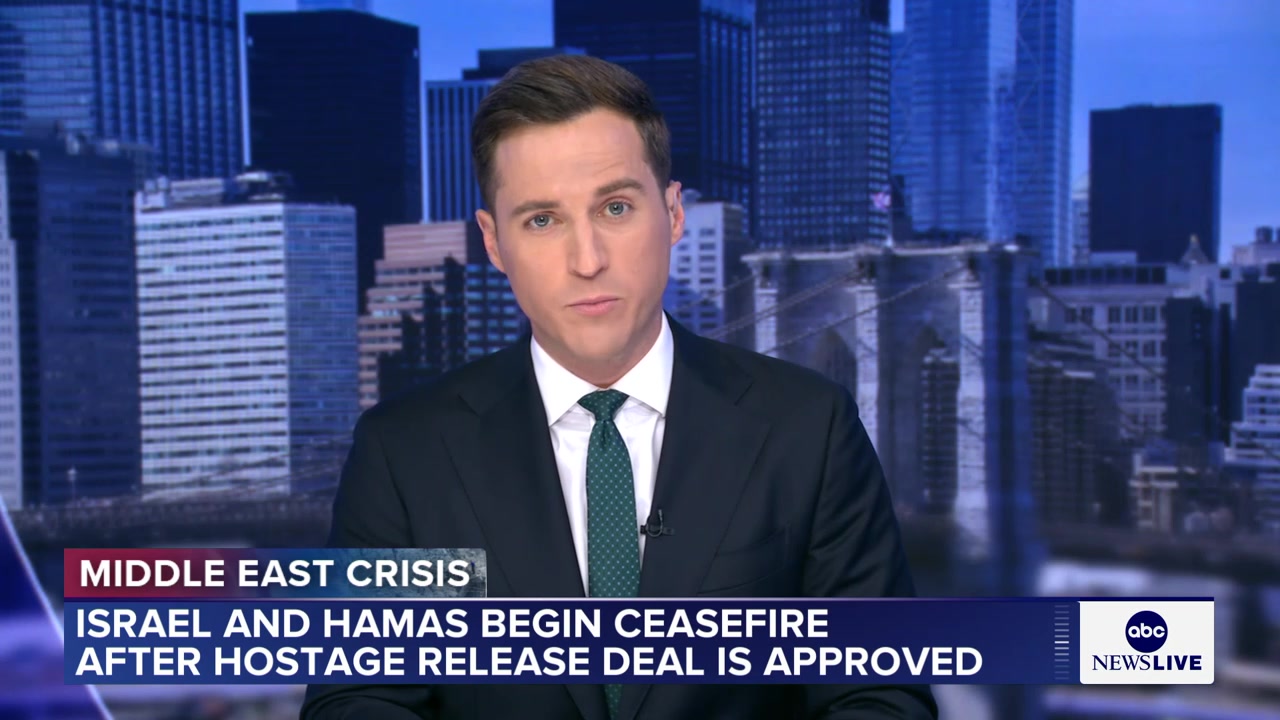
Frame 1 • 0:00
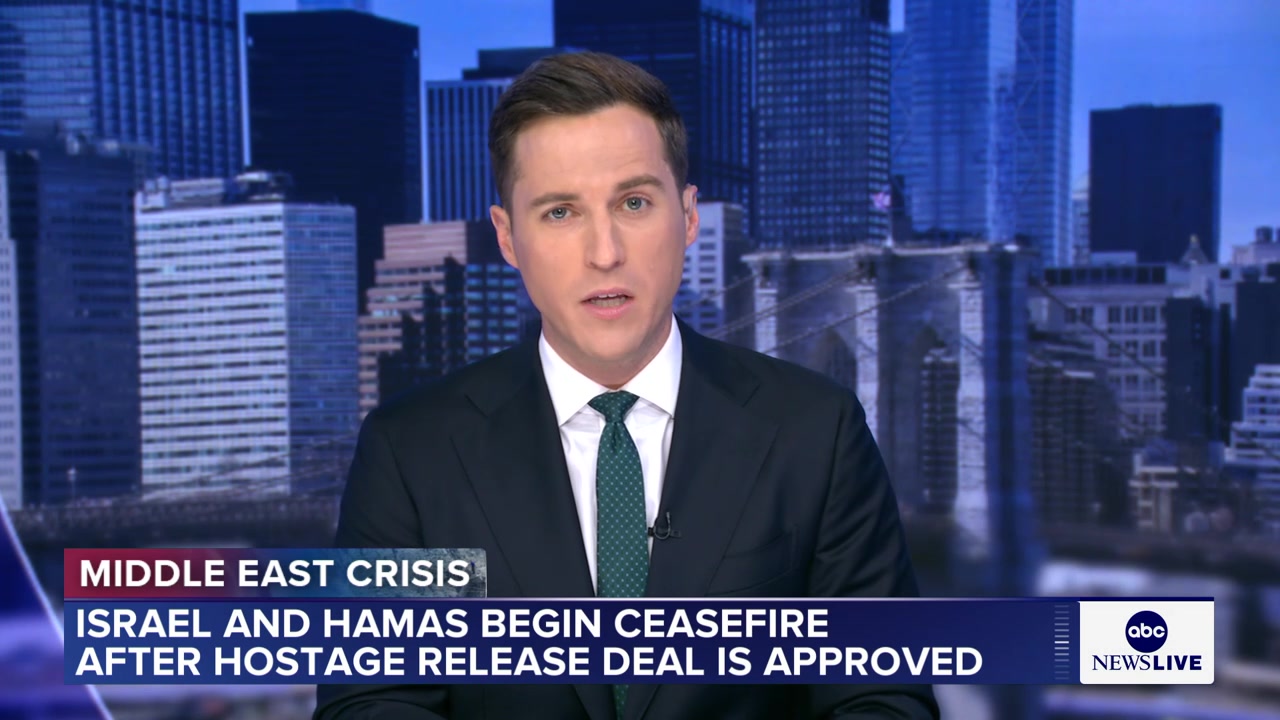
Frame 2 • 0:01
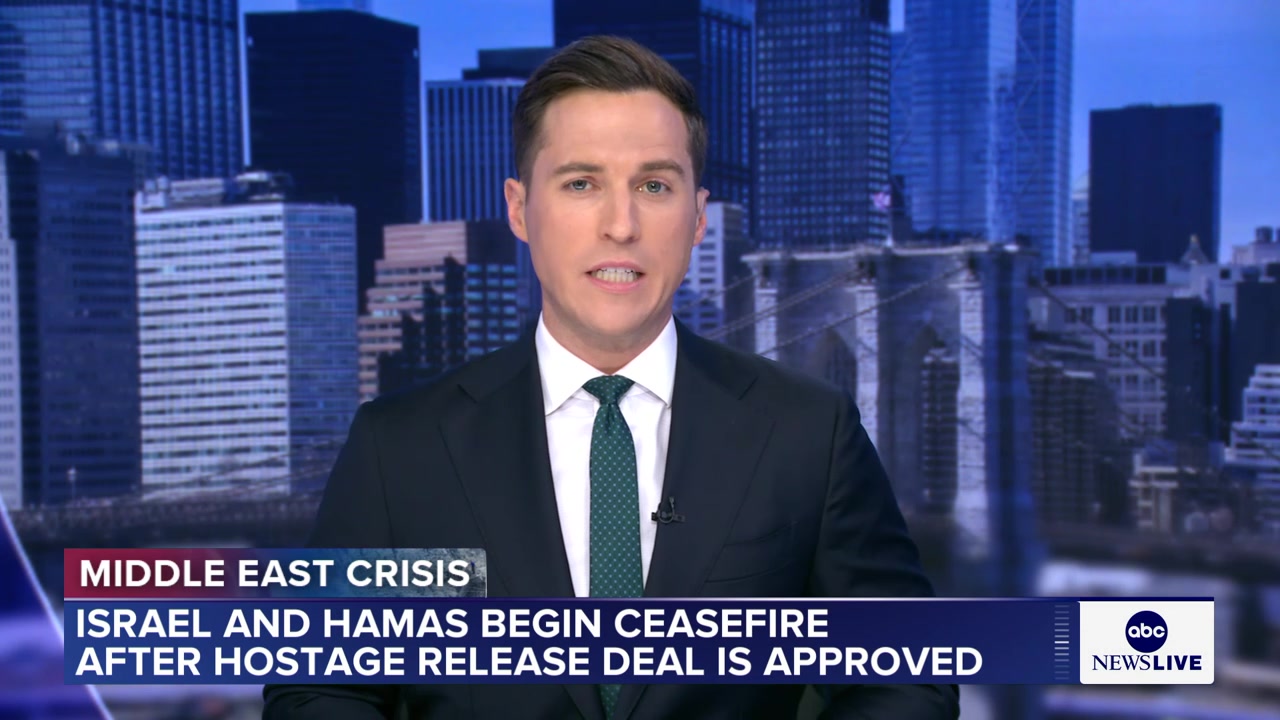
Frame 3 • 0:02
🎬 Visual: A news anchor delivers a headline about the ceasefire between Israel and Hamas, following the approval of a hostage release deal. The anchor remains seated in a studio setting with a city skyline backdrop, and a consistent news ticker provides context throughout the frames. There are no notable changes in the anchor’s posture or the visual elements across the beginning, middle, and end of the scene.
🎙️ Dialogue:
Let's bring in Trita Parsi. He is the Quincy Institute.
Duration: 2.8s
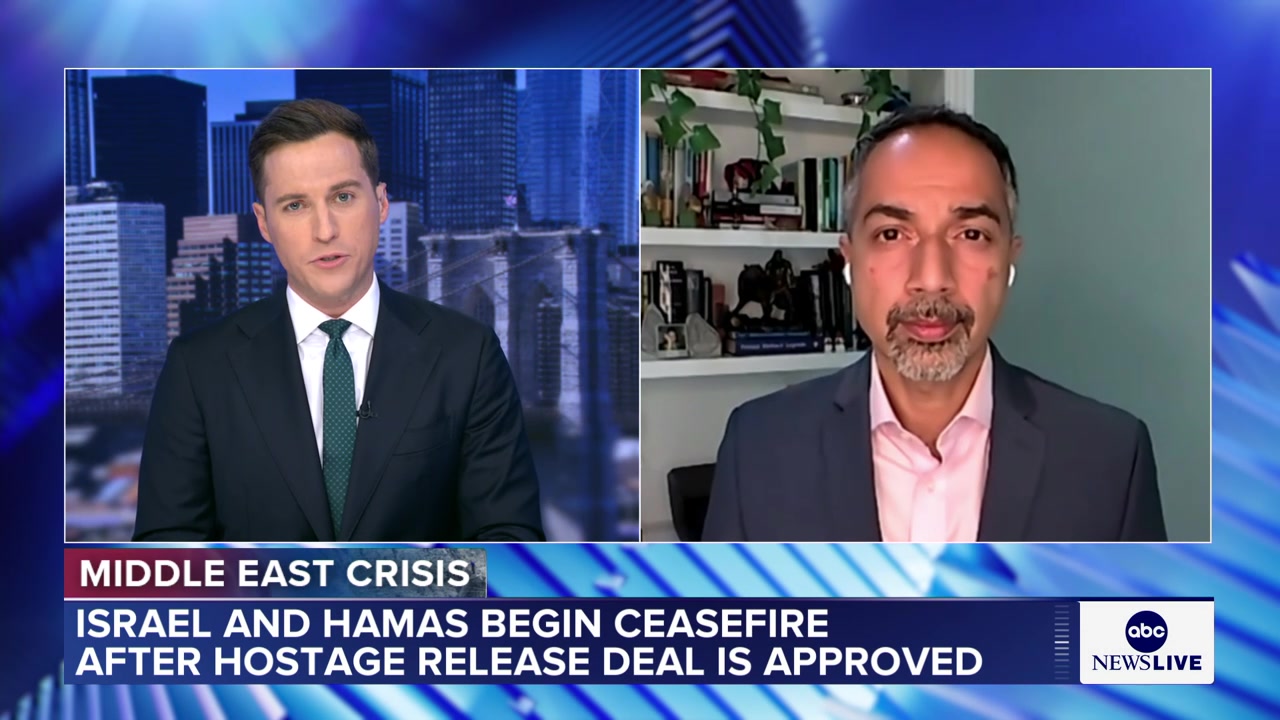
Frame 1 • 0:04
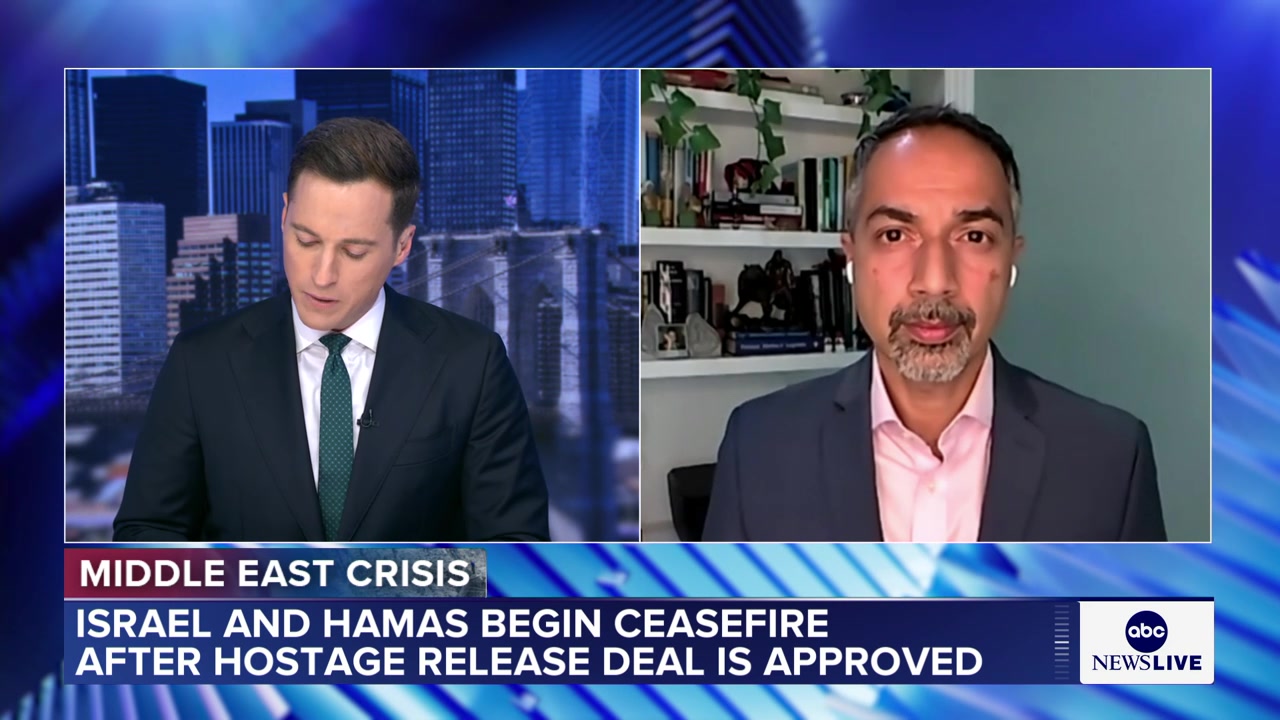
Frame 2 • 0:09
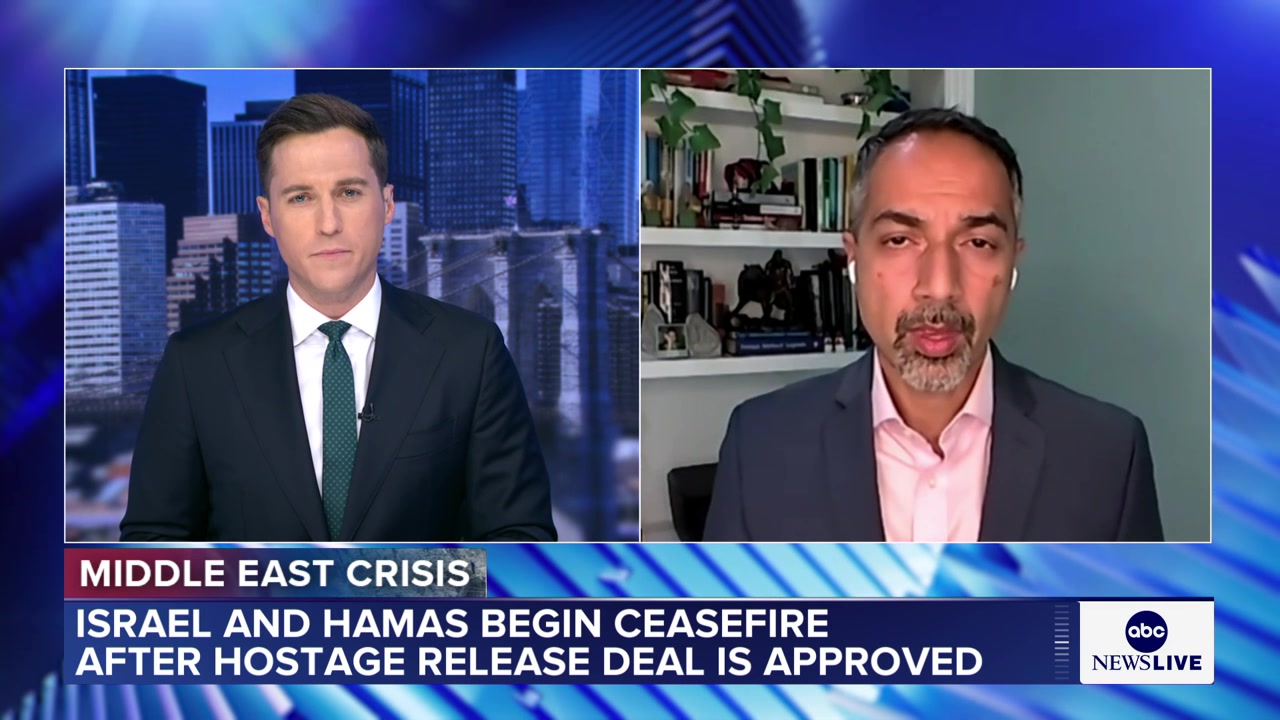
Frame 3 • 0:15
🎬 Visual: In this scene, a news segment discusses the Israel-Hamas ceasefire following the approval of a hostage release deal. The frames show a split-screen interview between a news anchor in a studio setting and a guest appearing remotely, with both participants remaining mostly stationary. The scene maintains a consistent setting and layout throughout, with only minor changes in head orientation and eye contact as the discussion progresses.
🎙️ Dialogue:
VP and author of Treacherous Alliance, the secret dealings of Israel, Iran and the U.S. So Trita, you write here that the Trump-Gaza deal will work but only if he keeps pressure on Israel. Why is that?
Duration: 13.7s
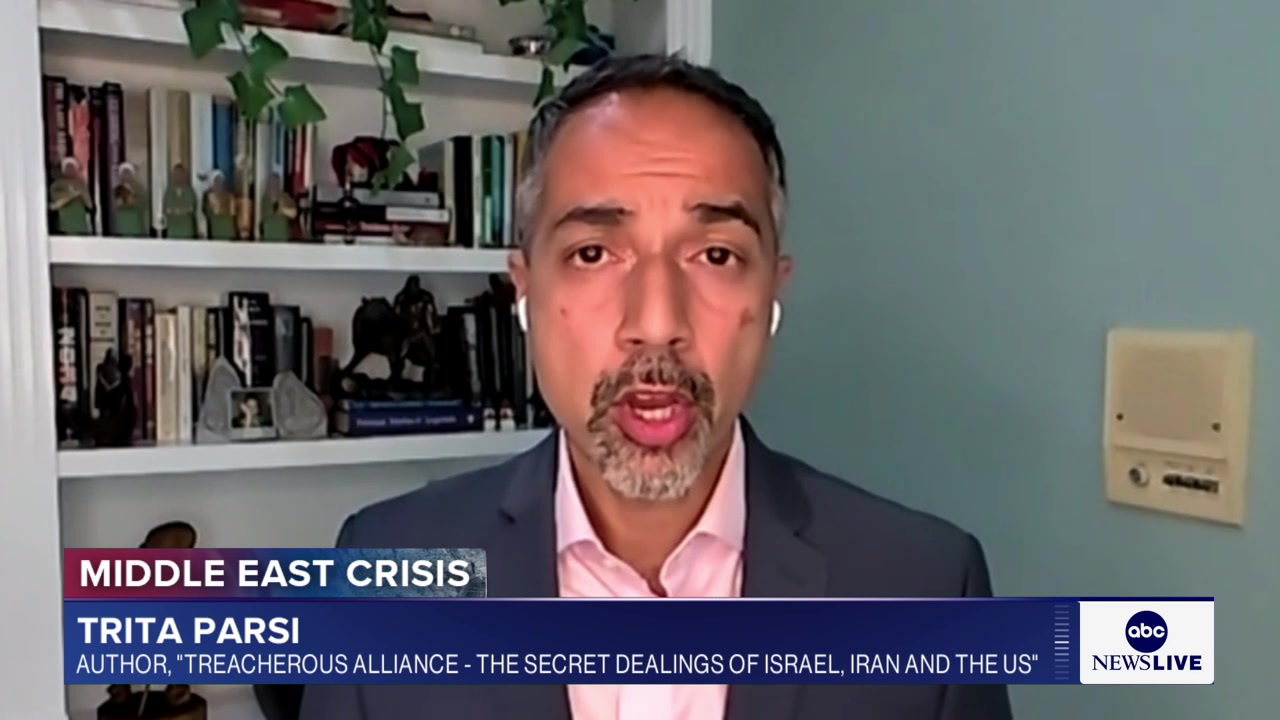
Frame 1 • 0:21
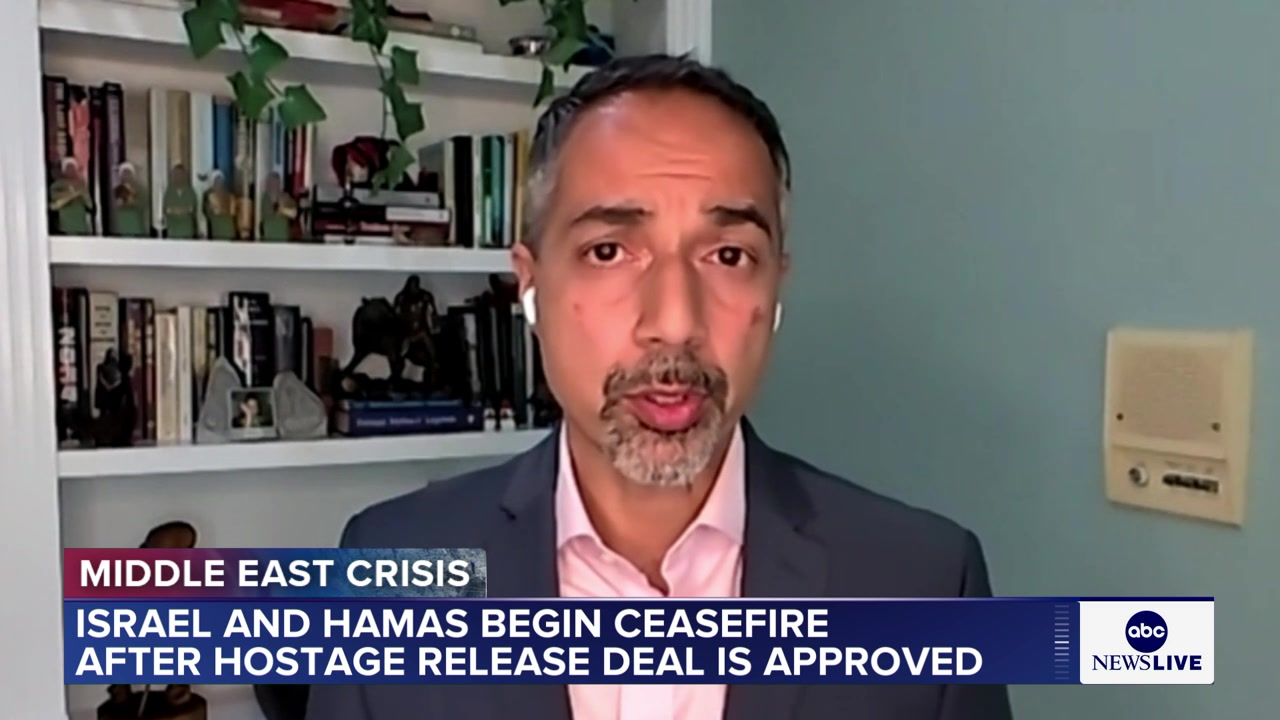
Frame 2 • 0:41
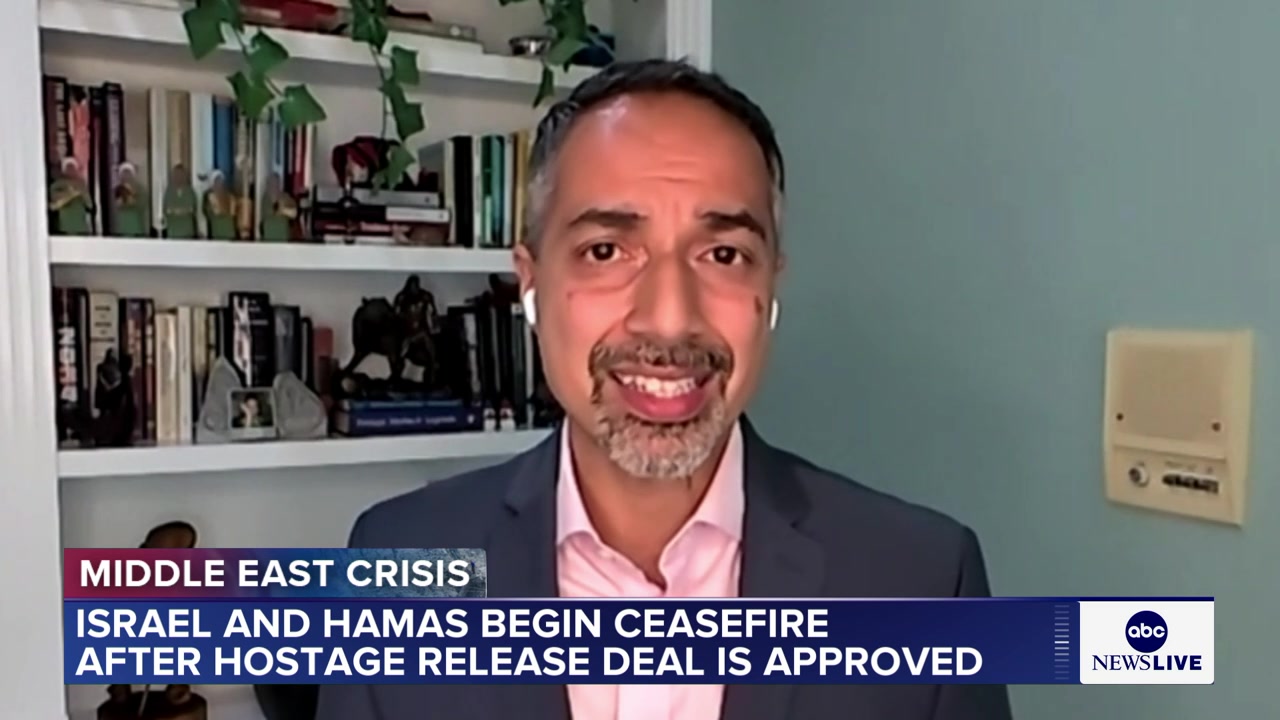
Frame 3 • 1:01
🎬 Visual: In this scene, a remote interview is conducted with Trita Parsi, an author specializing in Middle East relations, as seen in a room with bookshelves in the background. The discussion begins with the context of the Middle East crisis, then shifts focus to news of Israel and Hamas initiating a ceasefire following the approval of a hostage release deal. The key change across the frames is the transition in the on-screen headline, reflecting the development of the ceasefire agreement.
🎙️ Dialogue:
examples in the past, particularly the one we saw in January to March, in which the Trump administration used American leverage in a manner that the Biden administration never even tried, and by that managed to get a ceasefire. But they did not sustain the pressure, and by March of that year, the Israelis broke the ceasefire, the war started again, or the mass slaughter started again, and here we are in the terrible situation in which many of the hostages in that time period also got killed. So in order to make sure that this works, and we have to give the president credit for having taken this initiative, but in order for it to be more than just a tactical pause or even just a ceasefire, but actually lead to something that is long-lasting, there needs to be sustained pressure on all parties, but particularly on the Israelis, mindful of the Israeli government's disinterest in actually ending the war. We heard from Steve Witkoff today, Jared.
Duration: 50.0s
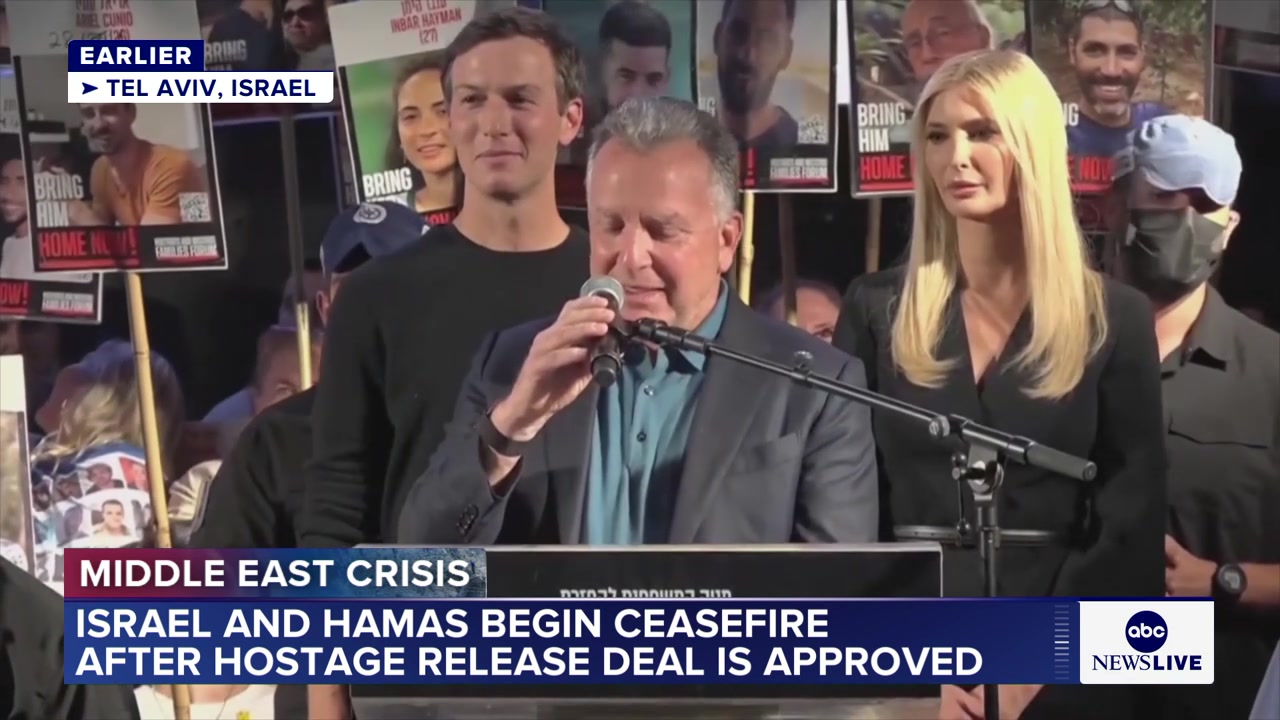
Frame 1 • 1:14
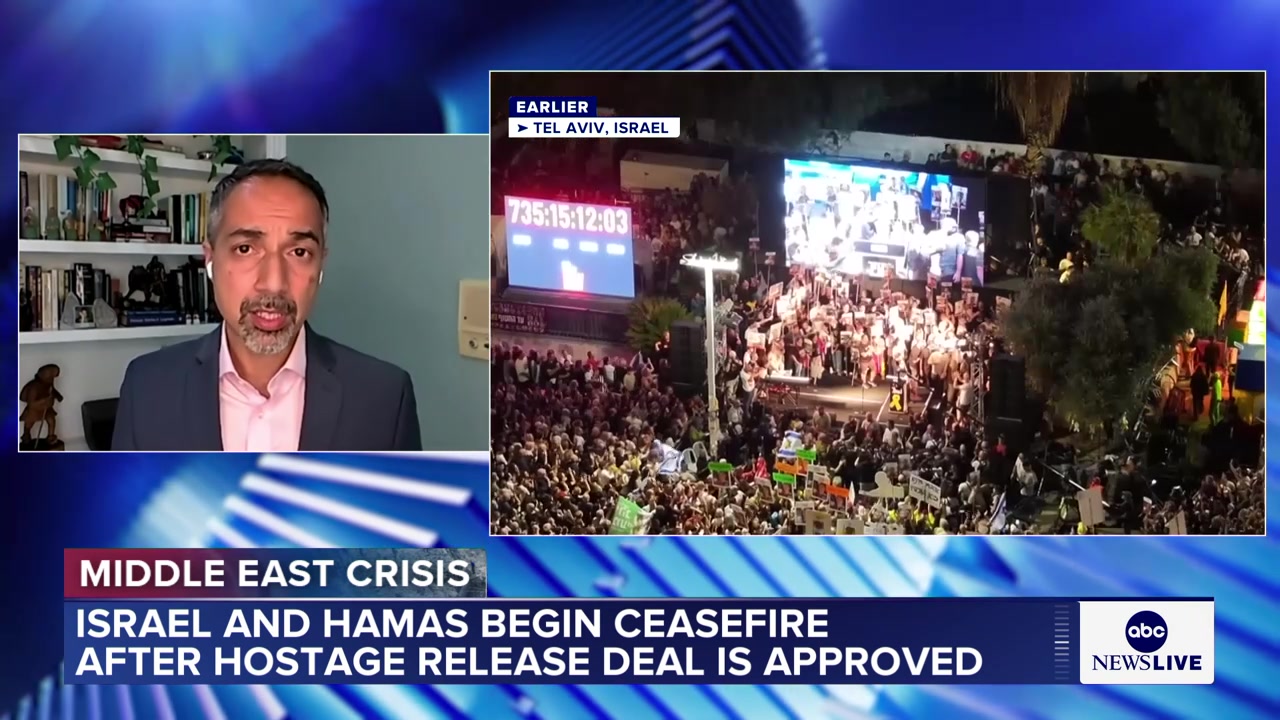
Frame 2 • 1:46
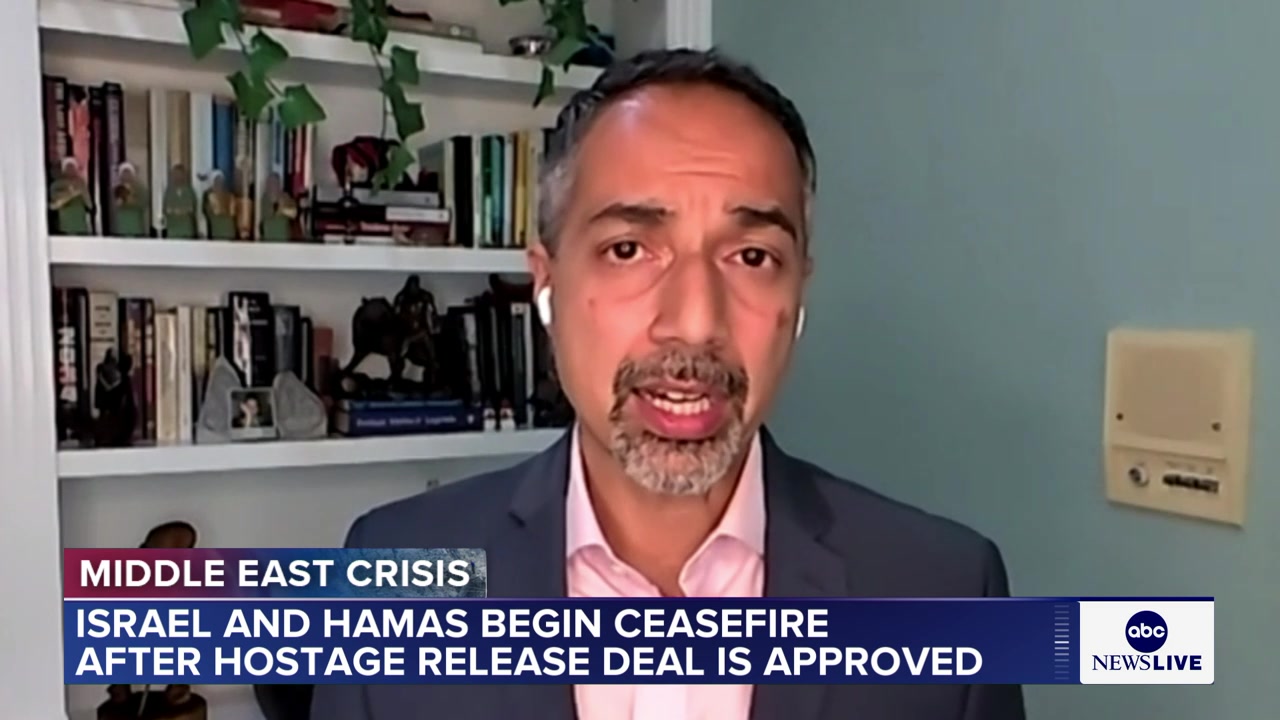
Frame 3 • 2:17
🎬 Visual: The scene begins with a speaker addressing a crowd at a public gathering in Tel Aviv, where people hold signs calling for hostages to be brought home. The middle frame shows a split screen: one side features an aerial view of the large, sign-holding crowd at the rally, while the other side introduces a news correspondent or analyst speaking from an indoor setting. The scene ends with a close-up of the correspondent providing further commentary on the ceasefire and hostage release agreement between Israel and Hamas.
🎙️ Dialogue:
Kushner and President Trump's daughter Ivanka at the rally there. They say they weren't celebrating, but it sounded as if they were celebrating. No hostages that we know of yet have been transferred. No prisoners have been transferred. How do you see the ceasefire playing out right now? What process do you think we're in? I think we're back in the situation in which there is a safe approach, of course, and that always carries with it the risk that we will never get past phase one. And phase one, obviously, would be fantastic to get the hostages released, the thousands of Palestinians, including children and women who have been taken prison by the Israelis as well, and to just end this mass slaughter that is taking place right now. But if we want this to be a long-lasting thing, there needs to be an added process next to it that ensures that we go from a ceasefire to an end to the war to a resolution to the Israeli-Palestinian conflict. Trump seems to have an interest in doing this. He's eyeing the Nobel Peace Prize. He seems to be quite disappointed that he didn't get it this year. But there's still time, and there's also a necessity, because if we don't move forward, we will be moving backwards. And if he has now put his name on it and owns this as strongly as he does right now by all of these celebrations that are taking place, then he should have an interest in making sure that he pursues this to the very end.
Duration: 79.2s
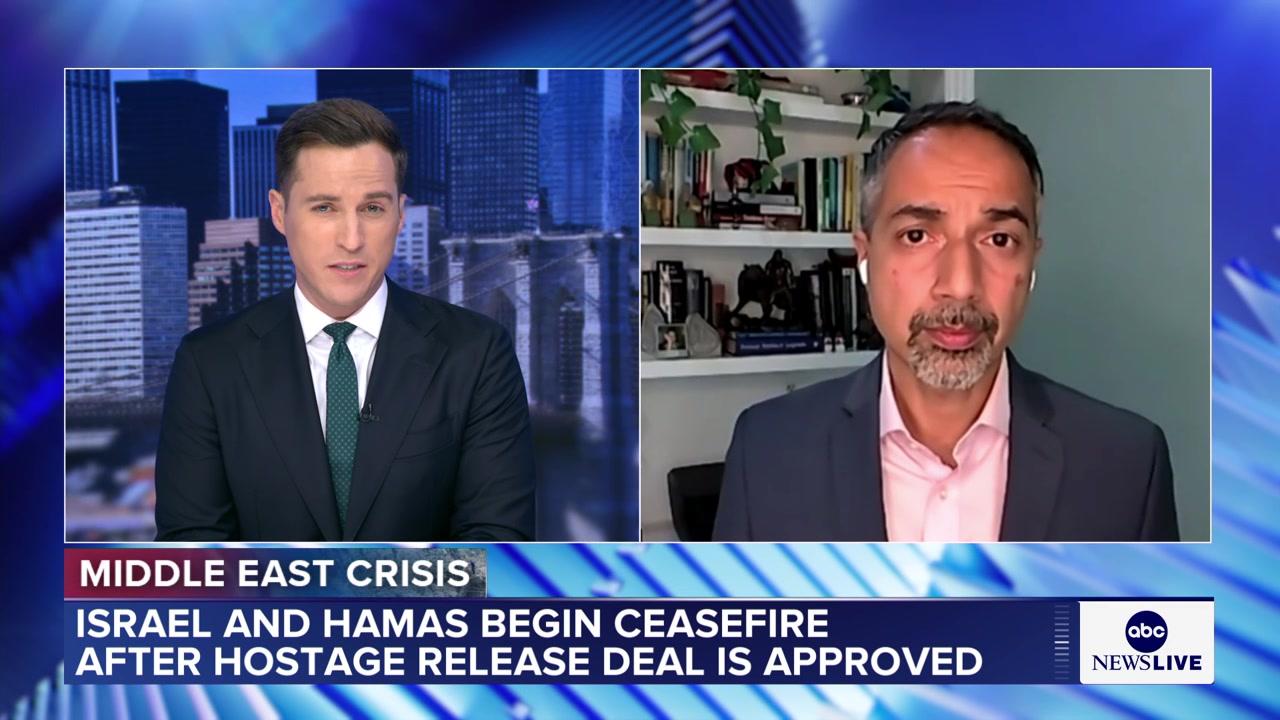
Frame 1 • 2:28
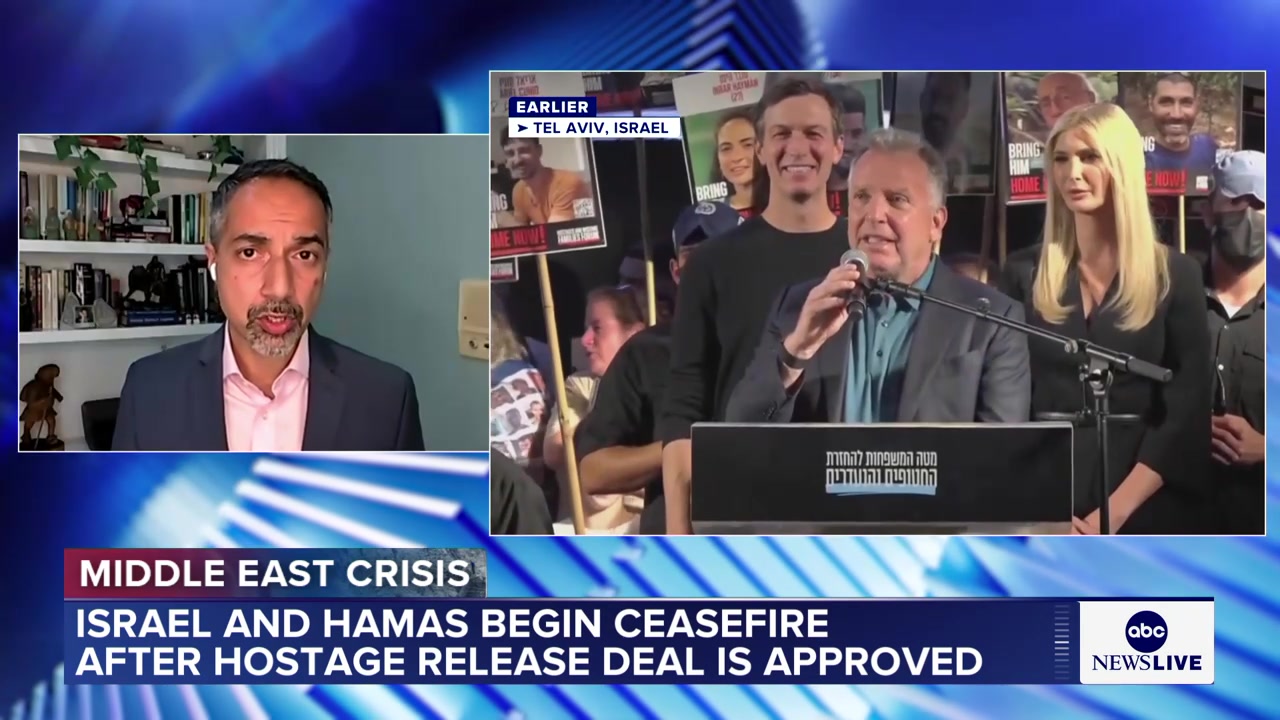
Frame 2 • 2:41
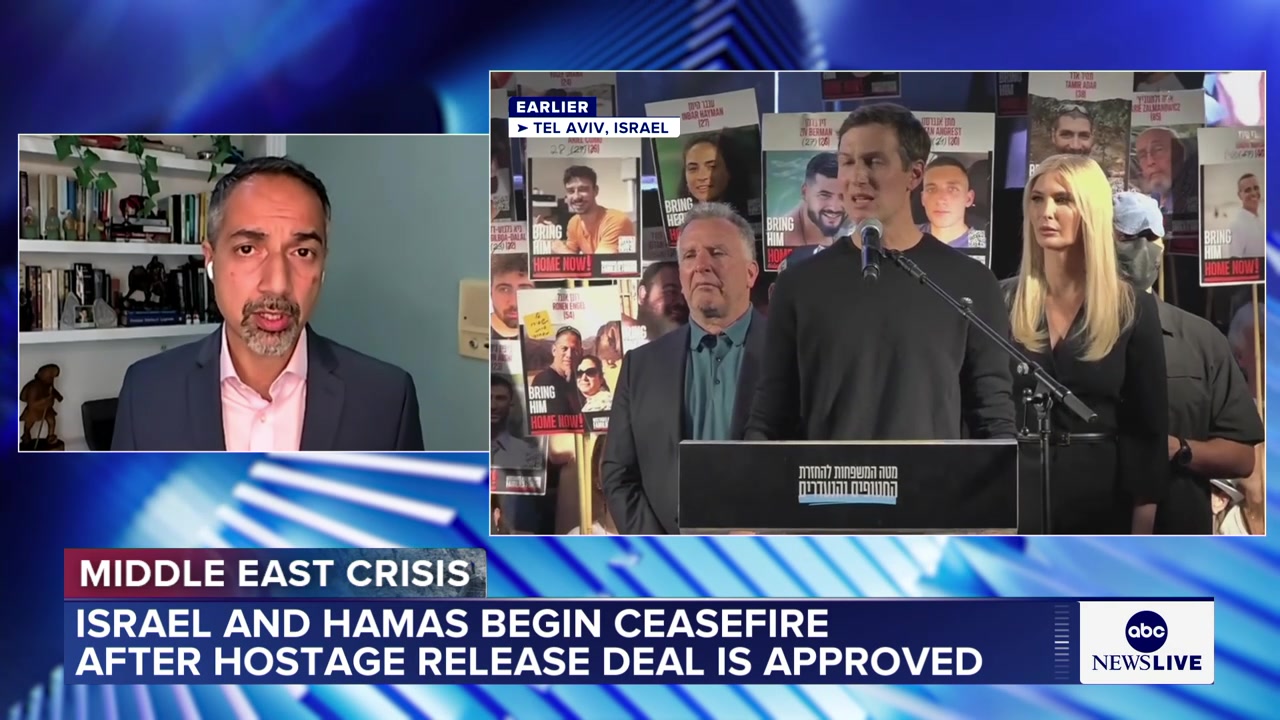
Frame 3 • 2:54
🎬 Visual: In this scene, the broadcast transitions from a studio interview to live coverage of a press event in Tel Aviv, Israel, focused on the Middle East crisis and the announcement of a ceasefire after a hostage release deal. Key subjects include a news anchor, an expert guest, and speakers at the Tel Aviv event, with protest signs visible in the background. Notably, the visuals shift from a split-screen studio setup to live footage of the press event where multiple individuals address the crowd.
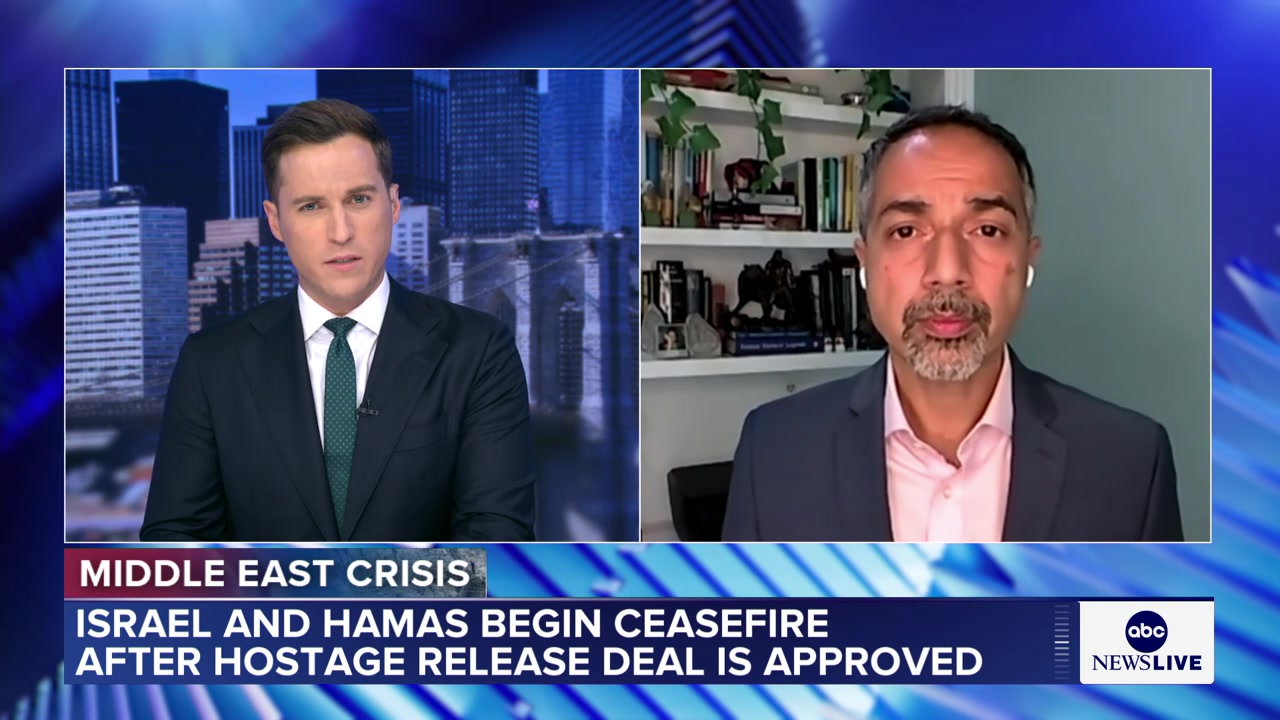
Frame 1 • 2:58
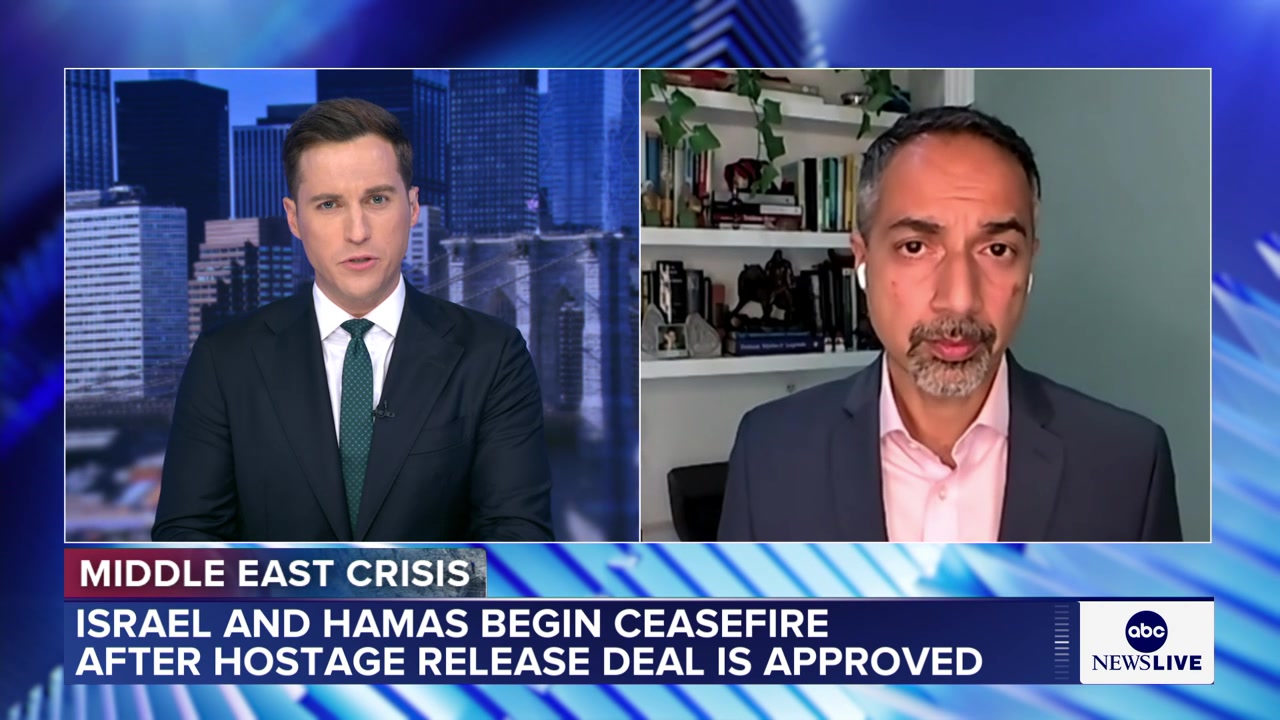
Frame 2 • 3:01
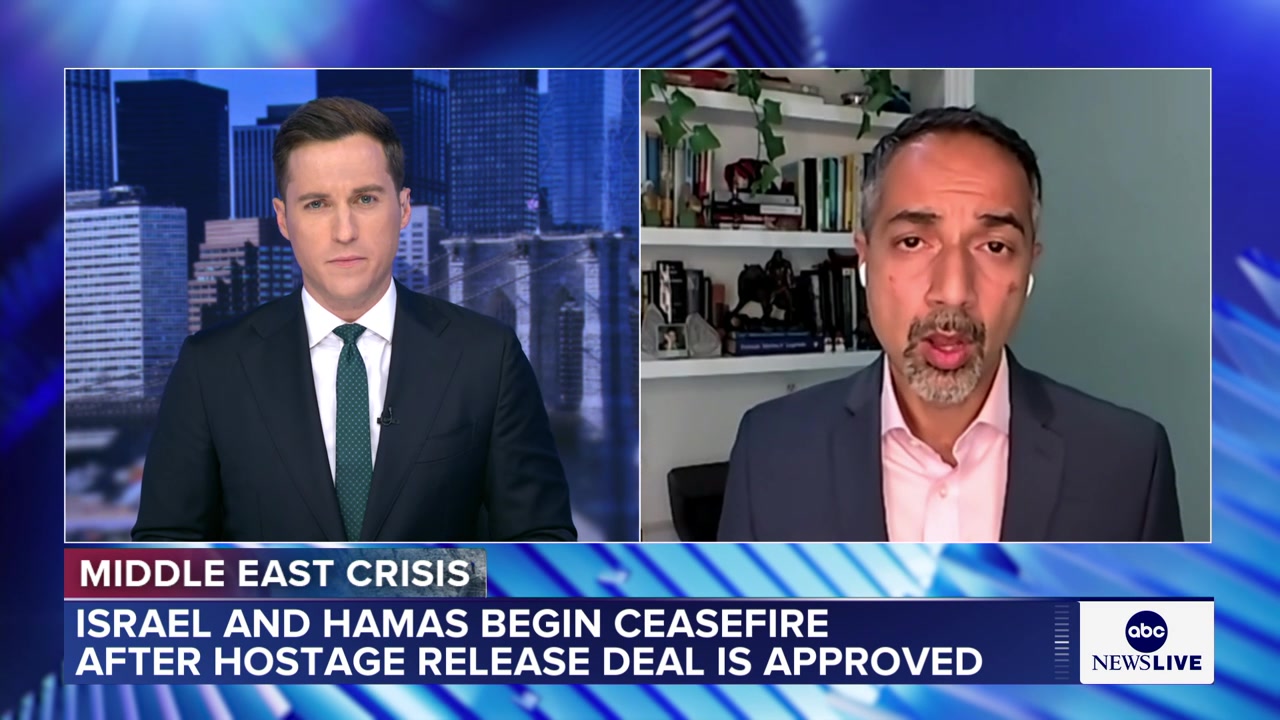
Frame 3 • 3:03
🎬 Visual: In this scene, a news anchor and a guest are shown in a split-screen format discussing the recent ceasefire between Israel and Hamas following a hostage release deal. The setting alternates between a studio background for the anchor and a home office with bookshelves for the guest, as indicated by their surroundings. Throughout the frames, both subjects remain visually engaged in conversation, with no significant changes in their posture or location.
🎙️ Dialogue:
once they get their hostages back. What does Israel do to Gaza, do you think?
Duration: 5.8s
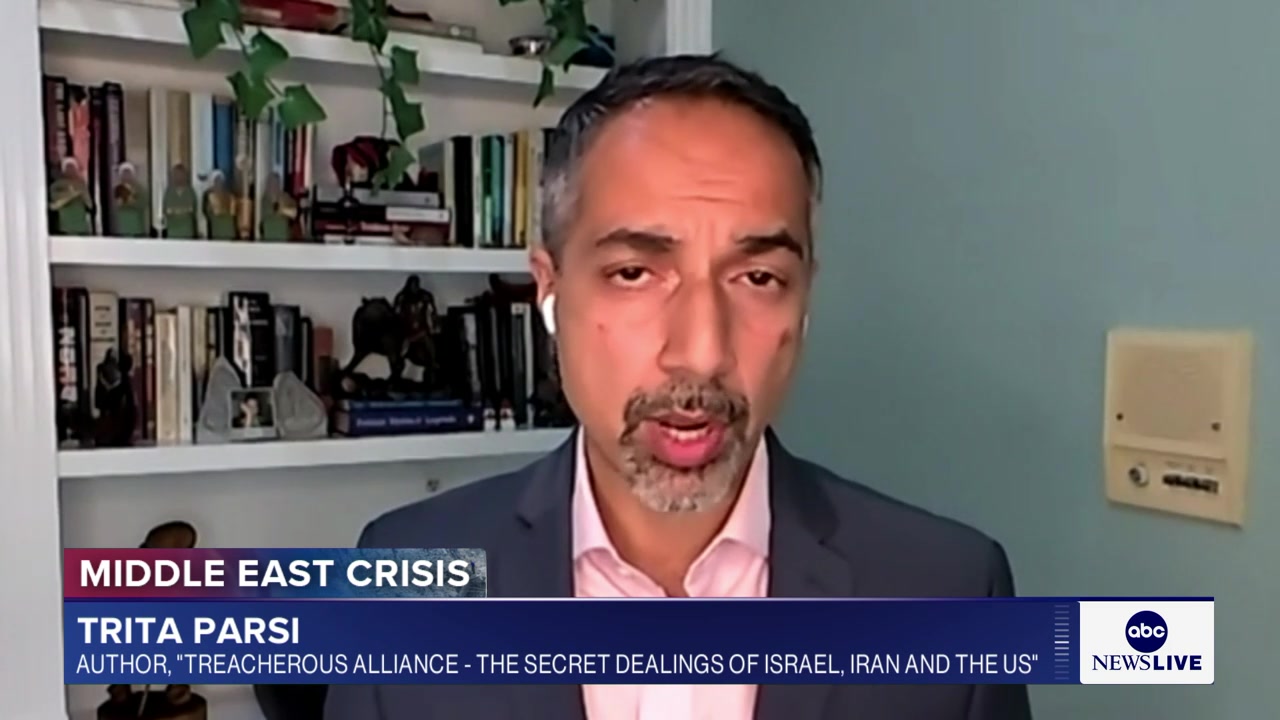
Frame 1 • 3:07
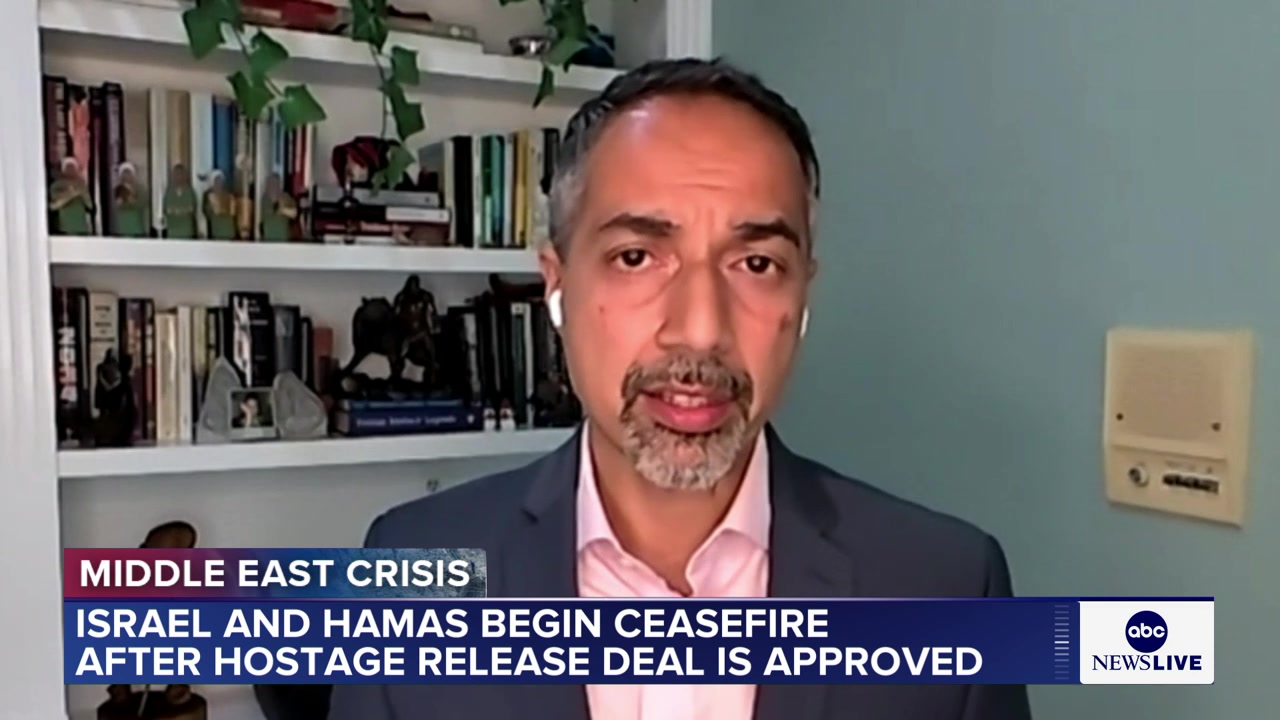
Frame 2 • 3:20
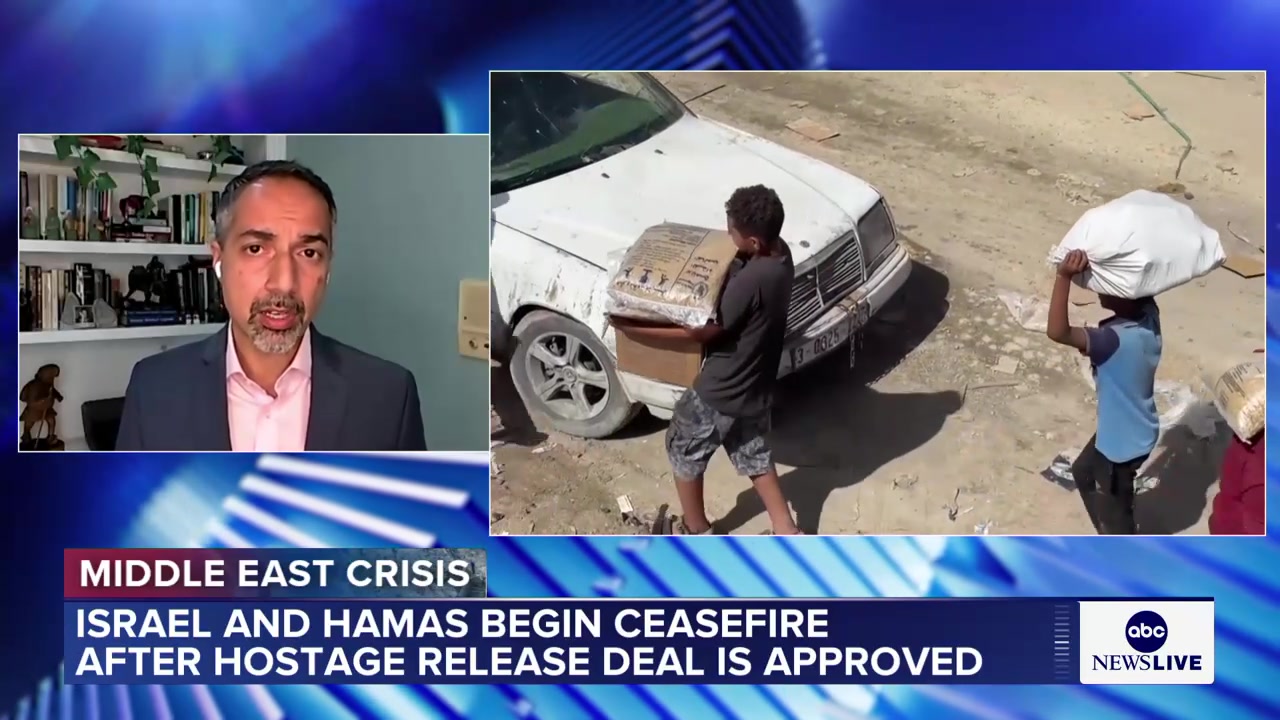
Frame 3 • 3:34
🎬 Visual: In this scene, an expert interview is conducted remotely as part of a news segment discussing the Middle East crisis, initially introducing the guest author and later updating viewers about a ceasefire between Israel and Hamas following a hostage release deal. The setting transitions from a home office with bookshelves to a split-screen format, showing people on the ground transporting supplies, visually representing the impact of the ceasefire. The scene evolves from expert commentary to real-world footage, highlighting the shift from analysis to tangible effects of the news event.
🎙️ Dialogue:
The most important thing is for them to withdraw. The military forces do not stand in the way of any aid and food getting into the Gaza Strip. I mean, the fact that the Israelis have been blocking this is the cause of this man-made famine, which is absolutely disastrous. So the Israelis really need to pull back, and I think there's a lot of questions that need to be answered inside of Israel as well. You have a lot of the hostage families being absolutely outraged at the Netanyahu government for having prioritized the continuation of the war over the release and the freedom of the hostages. Do you think Israel will follow the terms?
Duration: 33.8s
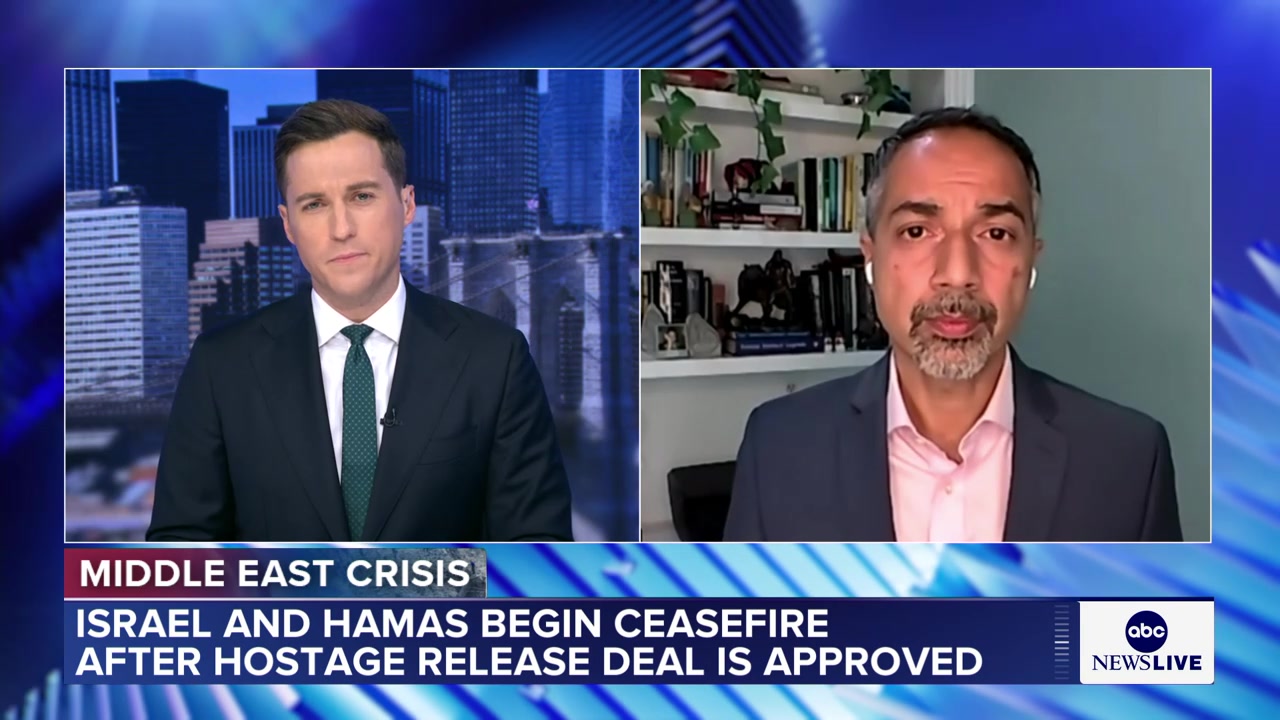
Frame 1 • 3:38
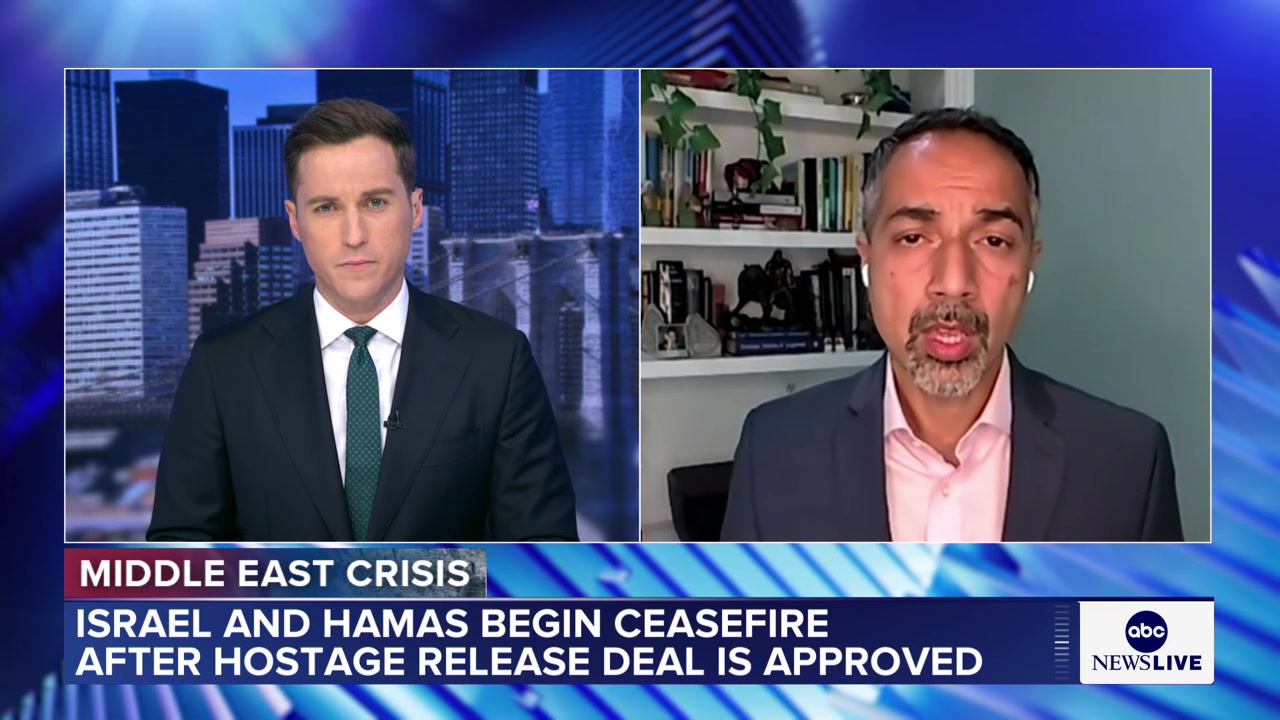
Frame 2 • 3:39
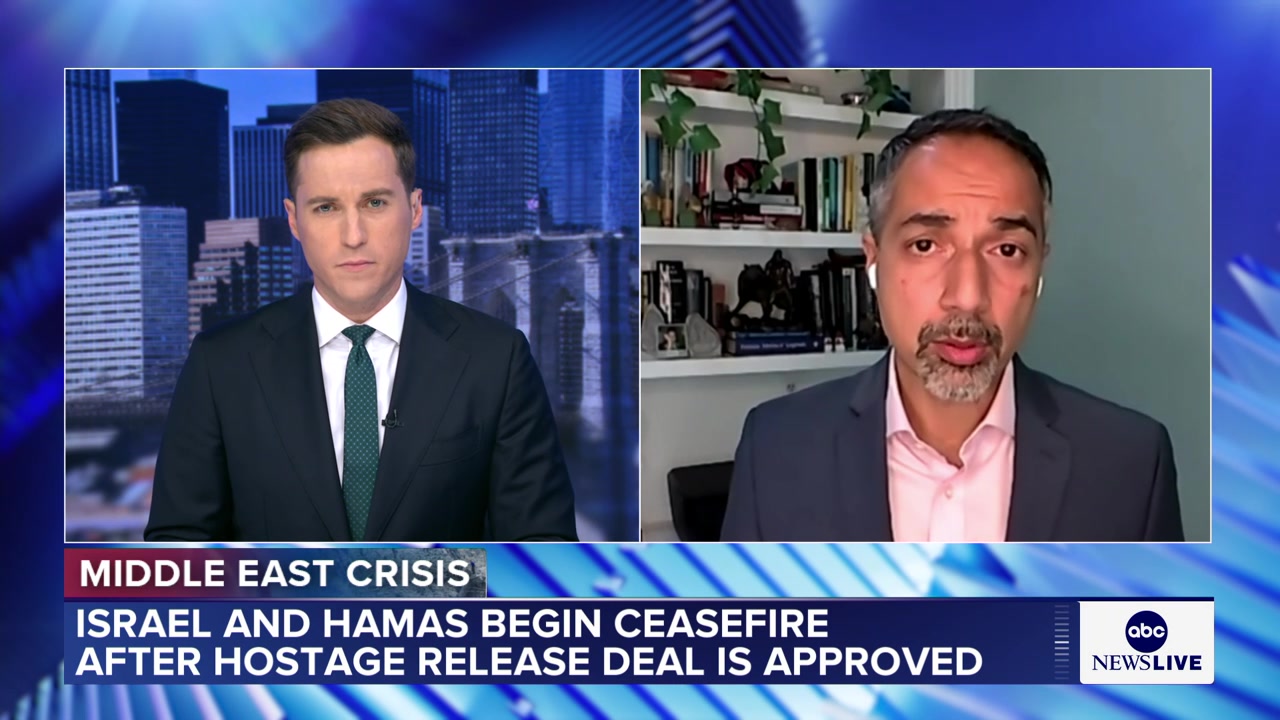
Frame 3 • 3:40
🎬 Visual: In this scene, a news anchor and a remote guest participate in a split-screen interview on ABC News Live, discussing the beginning of a ceasefire between Israel and Hamas following a hostage release deal. The setting features the anchor in a studio with a cityscape background and the guest in a home office with bookshelves. Across the three frames, the subjects maintain their positions, and there are no significant visual changes except for minor posture adjustments.
🎙️ Dialogue:
We absolutely need to make sure that we have the right people in the right place at the right time. We absolutely need to make sure that we have the right people in the right place at the
Duration: 2.9s
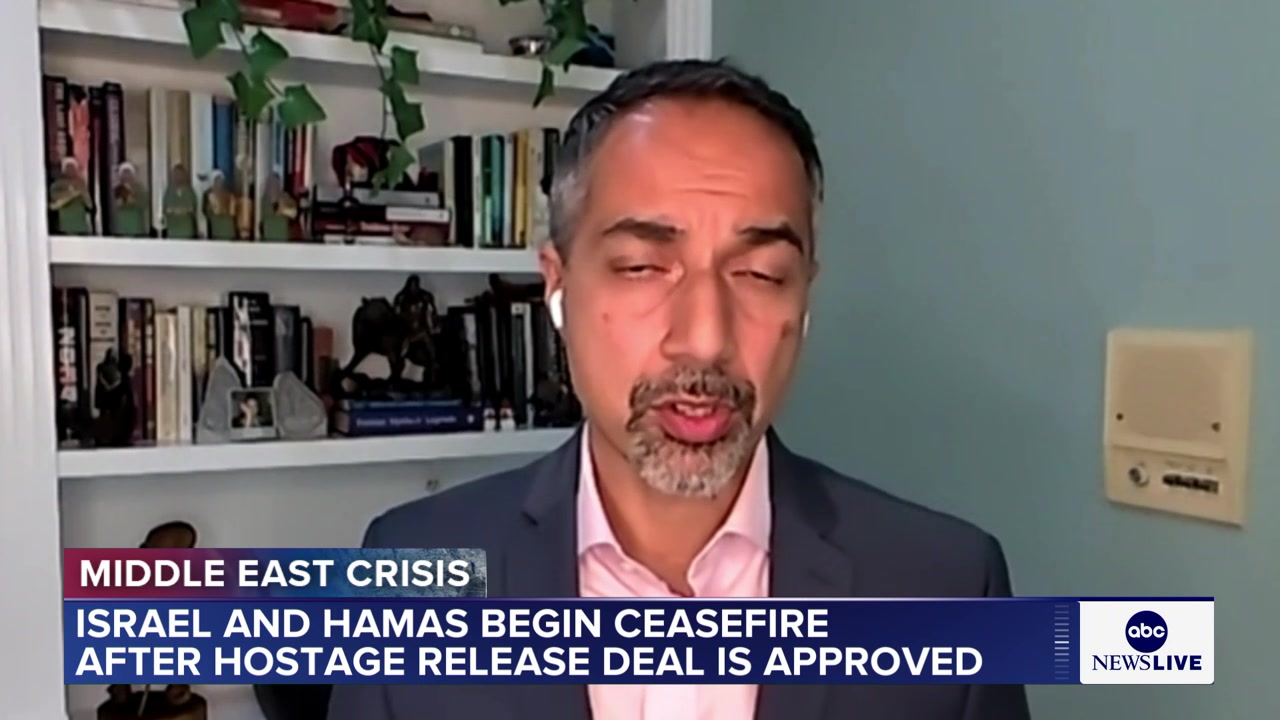
Frame 1 • 3:42
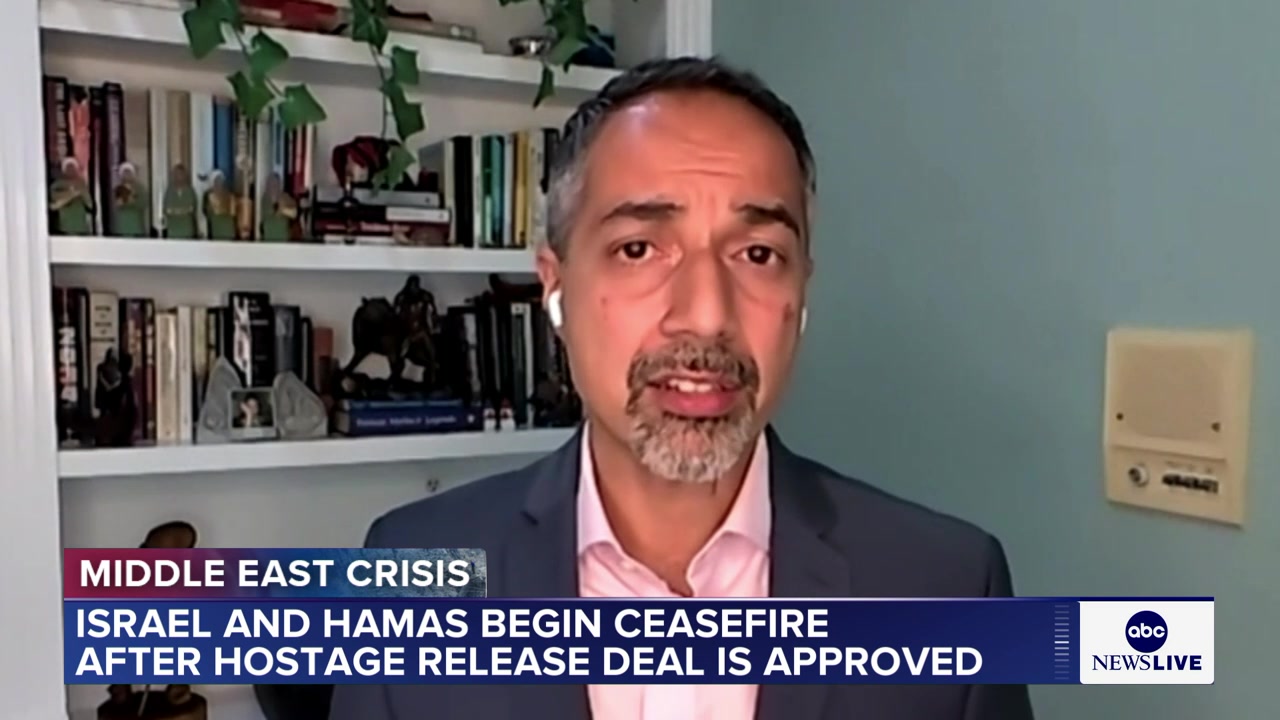
Frame 2 • 3:48
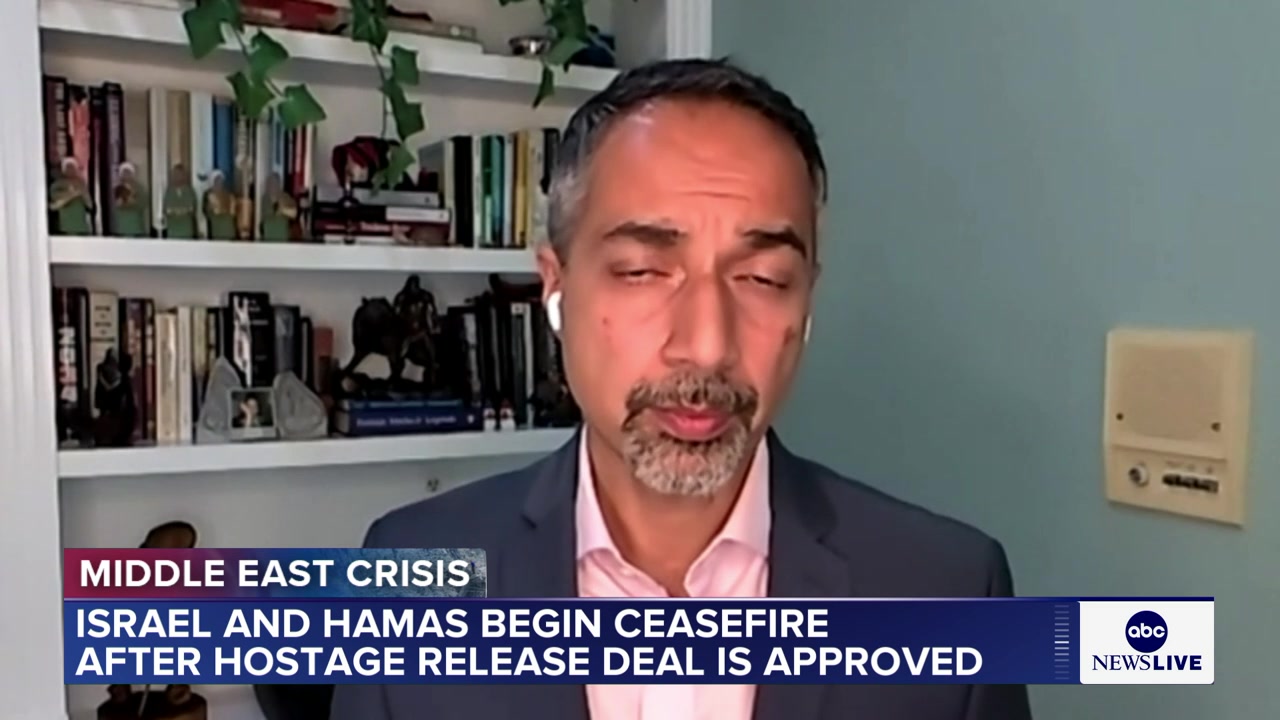
Frame 3 • 3:55
🎬 Visual: In this scene, a news broadcast segment is presented with a speaker in front of a bookshelf, discussing the Middle East crisis. The on-screen text reports that Israel and Hamas have begun a ceasefire following the approval of a hostage release deal, as shown on the ABC News Live channel. Across the three frames, the speaker remains stationary, and the setting and displayed information remain consistent.
🎙️ Dialogue:
that they do. We cannot just rely on hope that they will do it. It's the same thing, of course, with the Palestinians. But the United States has leverage over Israel and has rarely used it. In order to get this to the finishing line, that leverage needs to not only be used, it needs to be sustained. Trita Parsi, thank you for your time.
Duration: 16.5s
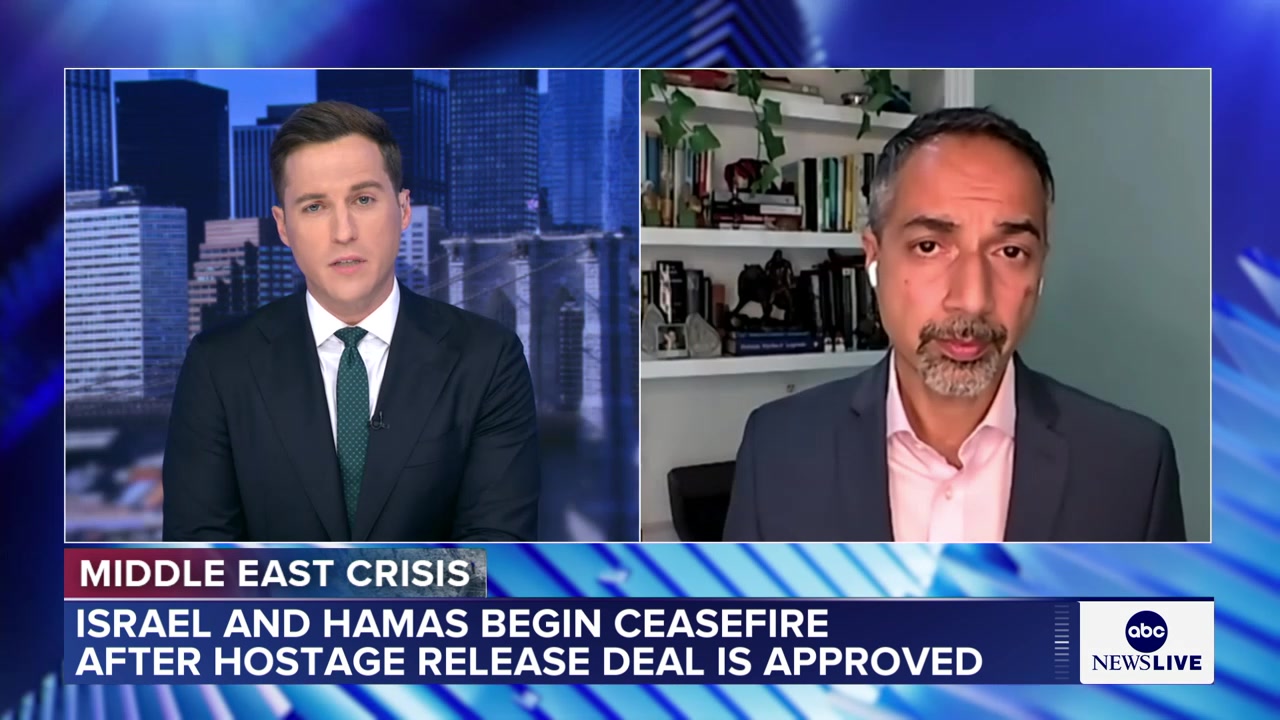
Frame 1 • 3:57
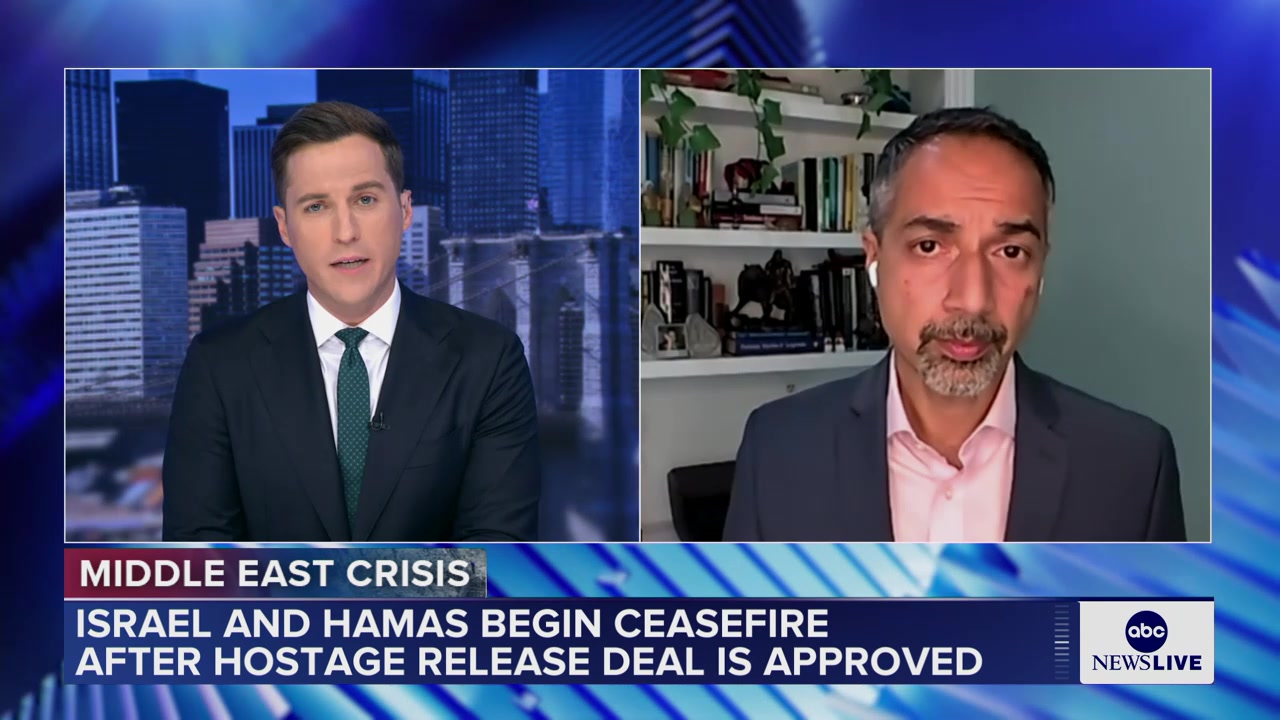
Frame 2 • 3:57

Frame 3 • 3:57
🎬 Visual: In this scene, a split-screen news segment covers the recent ceasefire between Israel and Hamas following approval of a hostage release deal, as indicated by the on-screen text. The key subjects are two individuals, one in a studio and the other appearing remotely with a bookshelf background, participating in the discussion. The scene ends abruptly with a transition to a black screen, marking the segment's conclusion.
🎙️ Dialogue:
Duration: 0.5s





























